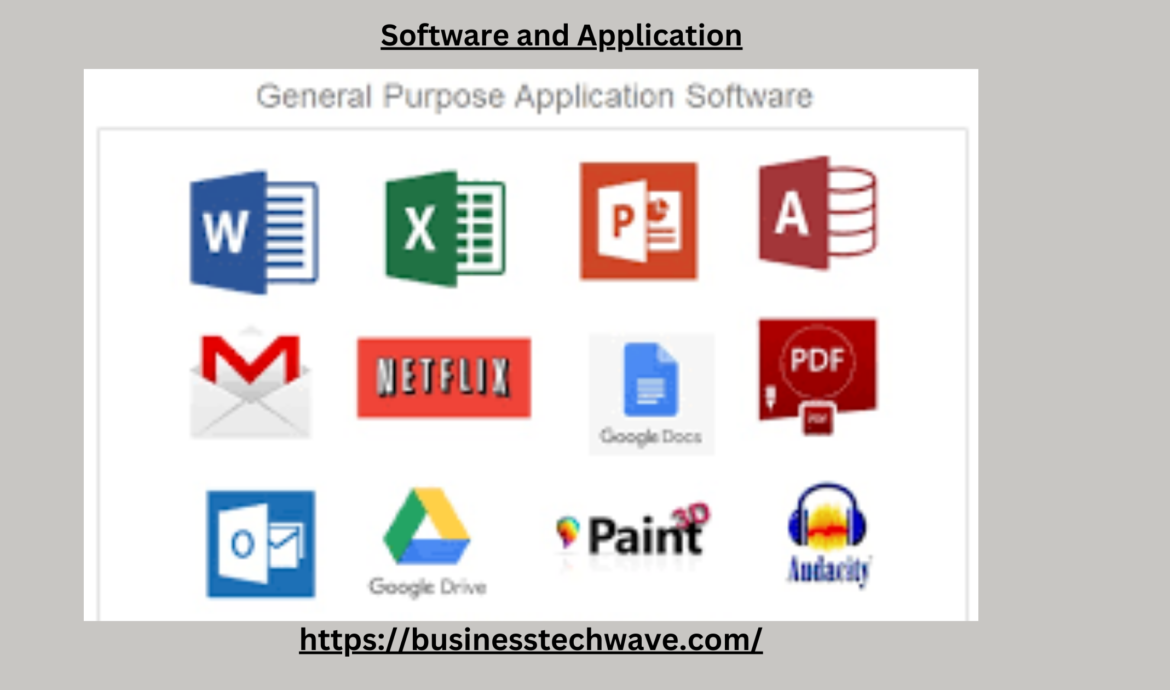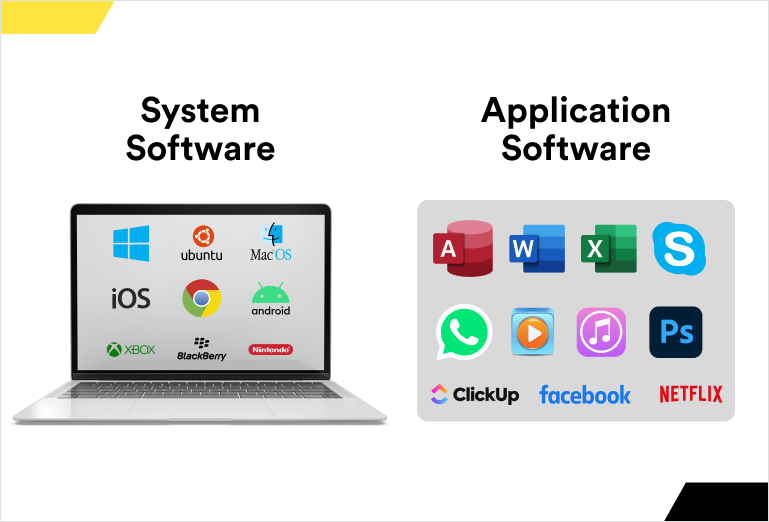
Best Understanding Software and Application 2024
Ramzanmughal103@gmail.com November 13, 2024 ArticleIn today’s digital world, software and applications play a pivotal role in every aspect of our daily lives. From smartphones and laptops to complex enterprise systems, software and applications enable users to perform various tasks, whether for personal enjoyment, productivity, or business operations. This article delves into what software and applications are, their differences, types, and significance. By the end, you’ll have a thorough understanding of these two technological pillars.
What Are Software and Applications?

In broad terms, software is a set of instructions, data, or programs used to operate computers and execute specific tasks. Applications, on the other hand, are types of software specifically designed for end-users to perform specific functions. While software is a general term, applications fall under a subset of software aimed at accomplishing particular tasks or providing specific functionalities.
Types of Software and Applications
- System Software System software manages the core operations of a computer. It includes the operating system (OS), drivers, and utility programs. Operating systems like Windows, macOS, and Linux are key examples. They help manage hardware, software resources, and provide essential services for software and applications.
- Application Software Unlike system software, application software is designed to perform specific tasks. Examples include word processors, media players, and web browsers. These software and applications enable users to perform distinct activities, such as writing, editing, or watching videos.
- Utility Software Utility software focuses on optimizing and managing system performance. Tools like antivirus programs, disk cleaners, and backup tools are examples of utility software applications that enhance and maintain computer functionality.
- Programming Software This category includes software used by developers to write code. Examples are IDEs (Integrated Development Environments), text editors, and compilers. Programming software plays a critical role in creating other applications.
The Differences Between Software and Applications
Although often used interchangeably, there’s a distinction between software and applications:
- Purpose: Software is an umbrella term for programs and procedures, while applications refer to specific types of software aimed at performing particular tasks for the end-user.
- Functionality: All applications are software, but not all software are applications. For example, system software, which includes operating systems, doesn’t directly interact with users, while applications do.
- Usage: System software supports application software by managing computer resources, while application software interacts with the user to carry out specific tasks.
Why Are Software and Applications Important?
Both software and applications are indispensable in the modern world. Here’s why:
- Automation: Software and applications automate repetitive tasks, saving time and reducing human errors.
- Productivity: Tools like spreadsheets, word processors, and communication platforms enhance productivity, making it easier for people to collaborate and manage workloads.
- Access to Information: With applications like web browsers, users can access information quickly and efficiently.
- Personalization: Users can choose software tailored to their needs, such as fitness apps for health tracking or financial software for budgeting.
Evolution of Software and Applications
From the basic systems of the 20th century to the advanced software and applications of today, technological advancements have redefined how users interact with computers:
- Early Software: In the early days, software was basic and limited to specific functions. Programs were often run on mainframes, and applications were rare and simple.
- Personal Computers: With the rise of personal computers, more people gained access to software and applications for everyday use. Software like word processors and spreadsheets became household staples.
- The Internet Era: The internet revolutionized software and applications, allowing for web-based software like email, social media platforms, and cloud storage applications.
- Mobile Applications: Smartphones brought about a new wave of applications designed specifically for mobile devices, catering to on-the-go needs and touch-based interfaces.
- The Age of AI and Cloud: Modern software increasingly leverage AI and cloud technology, enabling smart applications, machine learning tools, and remote storage solutions.
Examples of Popular Software and Applications
- Microsoft Office Suite: This popular suite includes applications like Word, Excel, and PowerPoint, which are designed for productivity tasks.
- Google Chrome: A widely used web browser, Chrome enables users to access information and resources on the internet.
- Adobe Photoshop: A well-known application for graphic design and photo editing.
- Slack: A communication and collaboration tool popular among teams and organizations for streamlined project management.
Choosing the Right Software and Applications
With the vast variety of software available, choosing the right one can be challenging. Here are a few tips:
- Define Your Needs: Identify what you need the software for, whether it’s for personal use, productivity, entertainment, or business purposes.
- Consider Compatibility: Ensure that the software or application is compatible with your device and operating system.
- Evaluate Cost: Some software and applications are free, while others require a one-time payment or subscription. Consider your budget before making a choice.
- Check Reviews and Ratings: User reviews and ratings can give you insight into the quality and functionality of the software.
- Security: Make sure the software has robust security measures, especially if it involves sensitive data.
The Future of Software and Applications
The landscape of applications continues to evolve, influenced by emerging technologies like artificial intelligence, virtual reality, and the Internet of Things (IoT). Here are some trends shaping the future:
- Artificial Intelligence (AI) Integration: More applications are incorporating AI for improved user experiences, such as predictive text, automated responses, and personalized recommendations.
- Cloud-Based Applications: Cloud technology allows users to access applications and data remotely, fostering collaboration and remote work. Cloud-based software are becoming increasingly popular due to their scalability and flexibility.
- Cross-Platform Development: Developers are creating applications that work seamlessly across multiple platforms, ensuring consistency and accessibility across devices.
- Enhanced Security Features: As cyber threats rise, developers focus on incorporating advanced security protocols to protect users’ data and privacy.
- Augmented Reality (AR) and Virtual Reality (VR): Software and applications using AR and VR are revolutionizing fields like gaming, education, and training, creating immersive user experiences.
Conclusion
The significance of software and applications in our daily lives cannot be overstated. As we become increasingly reliant on technology, understanding the types, purposes, and benefits of software and applications helps us make informed choices and utilize these tools effectively. Whether for personal, educational, or business use, software and applications have transformed how we communicate, work, and play, and will continue to shape the future in remarkable ways.
In the coming years, software and applications will evolve with new advancements, pushing the boundaries of innovation and enabling users to achieve even greater efficiency and convenience. The journey from basic computing systems to sophisticated AI-driven software and applications highlights the endless possibilities in technology.
Through this guide, you now have a better grasp of software and applications—from their types and functions to their impact and future trends. As technology advances, staying informed about applications will ensure you make the most out of these essential digital tools.
Leave a Reply